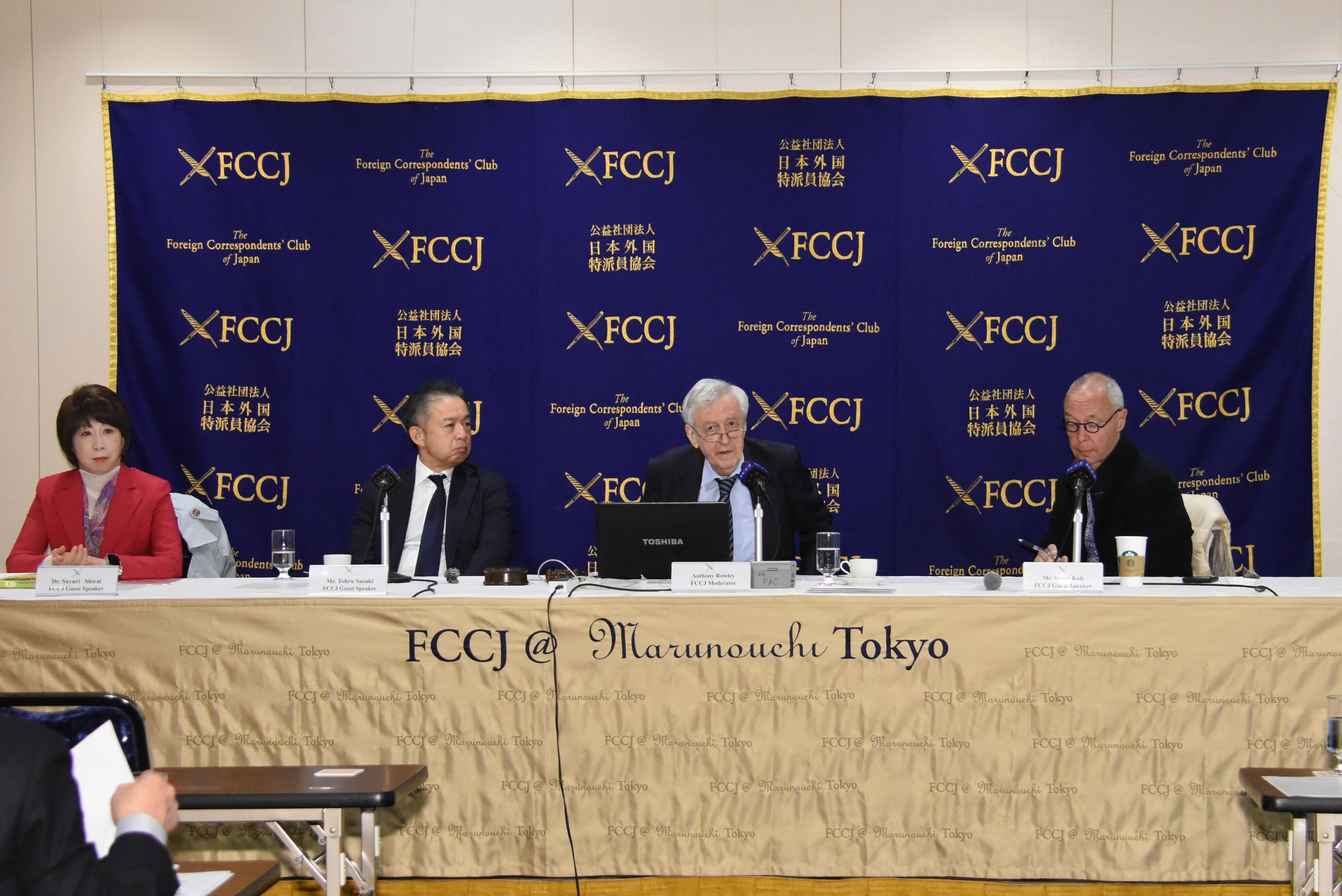Issue:
April 2023 | Deep Dive
Banking crisis compounds problems facing new regime at the Bank of Japan

Japan had plenty of banking problems of its own to deal with - arising from impending changes at the top of the Bank of Japan (BoJ) and their impact on monetary policy - even before the collapse of Silicon Valley Bank (SVB) and other financial institutions rocked markets and alarmed banking regulators.
The SVB crash and its sequel will complicate the task that new BoJ governor Kazuo Ueda and his lieutenants face in trying to normalize the monetary policies of outgoing governor Haruko Kuroda, which have brought Japan economic stability at the cost of some financial system distortions.
These and other issues formed the subject of a lively Deep Dive discussion at the FCCJ in March that featured BoJ policy board member (now a professor at Keio University) Sayuri Shirai; Tohru Sasaki, head of Japan markets research at JPMorgan Chase Bank in Tokyo; and veteran Japan analyst Jesper Koll.
Apart from the issue of how far the shock of the SVB and other collapses will be transmitted to Japan, questions hang over everything from the transition away from negative and zero interest rates to more "normal" monetary policy, plus the impact on foreign exchange, stock and bond markets.
At a a special session held on the same day as the Deep Dive, officials from the BoJ, the Finance Ministry and the Financial Services Agency agreed to monitor the impact on Japan’s financial system of recent international developments.
At the same time the Bank of Canada, the Bank of England, the BoJ, the European Central Bank, as well as the U.S. Federal Reserve and the Swiss National Bank, announced coordinated actions to enhance the provision of liquidity via the standing U.S. dollar liquidity swap line arrangements.
According to Professor Shirai, around 70% of total deposits at Japanese banks are from individuals and are stable, while the corporate deposit base is well diversified, so there is little fear of bank runs.
But while fallout from the crises at SVB, Signature Bank and First National Bank, plus the implosion of Credit Suisse and its prospective acquisition by UBS bank, may have little direct impact on Japan's megabanks, the contagion effect in credit markets could damage smaller Japanese banks that have raised their international lending.
Concern centers on 62 regional banks that traditionally serve individuals, companies, and local governments through their branch networks. In recent years, however, they have diversified into overseas lending to escape a stagnant lending market in Japan.
Regional banks hold a quite large part of their assets in foreign bonds and, according to Koll, they are facing about ¥1.4 trillion ($11 billion) of unrealised losses on their foreign bond holdings as a result of steep rate hikes in the U.S. and elsewhere.
Similar concerns about medium-size Japanese banks’ holdings of foreign bonds were expressed to AAM by Asia analyst and Carnegie Council Fellow Richard Katz, who suggested to the Number 1 Shimbun that these will be the subject of close attention by Japanese regulators and the market.
Japan's four megabanks and other large banks also face losses on bonds although they are smaller, relative to total assets, when compared with regional banks.The “value at risk” on bonds held by larger banks in the event of a 200 basis point rise in interest rates was some ¥2.3 trillion as of mid-2022, according to the BoJ.
How far and how fast the BoJ might raise rates under its new governor, who takes office on April 8, is the subject of much speculation. Currently, the central bank maintains a negative (minus 0.1%) short term rate while capping yields on the benchmark 10-year JGB at around 0.5%.
Few expect Ueda to quickly change this policy of yield curve control, although with consumer price inflation in Japan having touched 4% (twice the BoJ's annual target rate of 2%), and with food price inflation continuing and wage awards rising, pressure for change is growing.
Sasaki said that the BoJ would probably call an extraordinary meeting of its policy board between April and June to avoid clashes with the G7 summit in Hiroshima and Japan's Golden Week holidays in May. None of the panelists expected a significant shift from the BoJ’s yield curve control policy, however.
Ueda is a "pragmatist rather than a dogmatist" and will await market developments before moving, said Koll, adding that the BoJ’s deputy governor, Ryozo Himino – a former head of the Financial Service Agency – would probably want to cushion Japanese financial institutions against any sudden shocks.
Under Kuroda's yield curve control policies, the BoJ has acquired 52% of all Japanese Government Bonds and exchange traded funds representing more than 5% of the Topix Index. Any sudden change in holdings could create market turbulence.
The new regime at the BoJ will also need to address the possible impact of any policy shifts on the yen exchange rate. Sasaki expected that with a 400 basis point gap between U.S. and Japan short-term yields, the yen would remain weak. But given the slowing growth and financial turmoil in the U.S., Shirai said she saw dollar weakness ahead.
Anthony Rowley is a columnist and contributor for the South China Morning Post.

